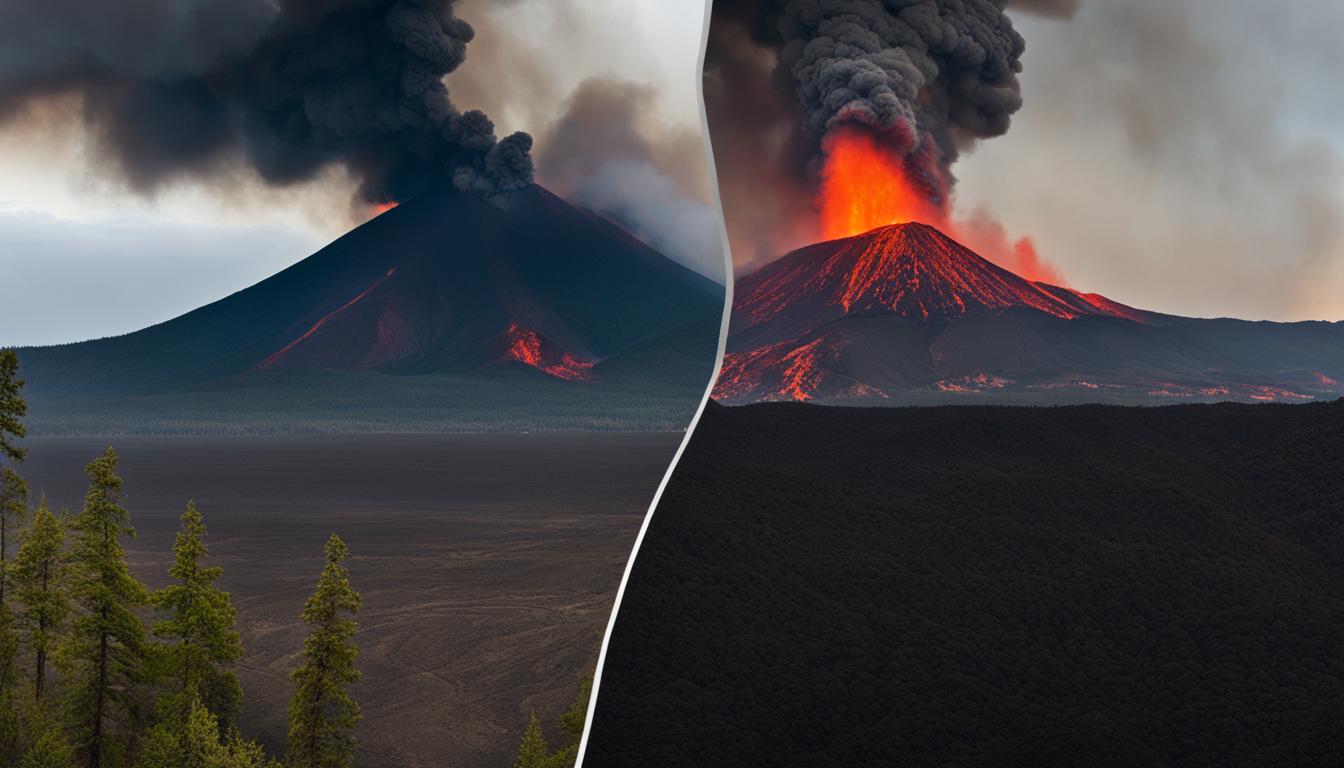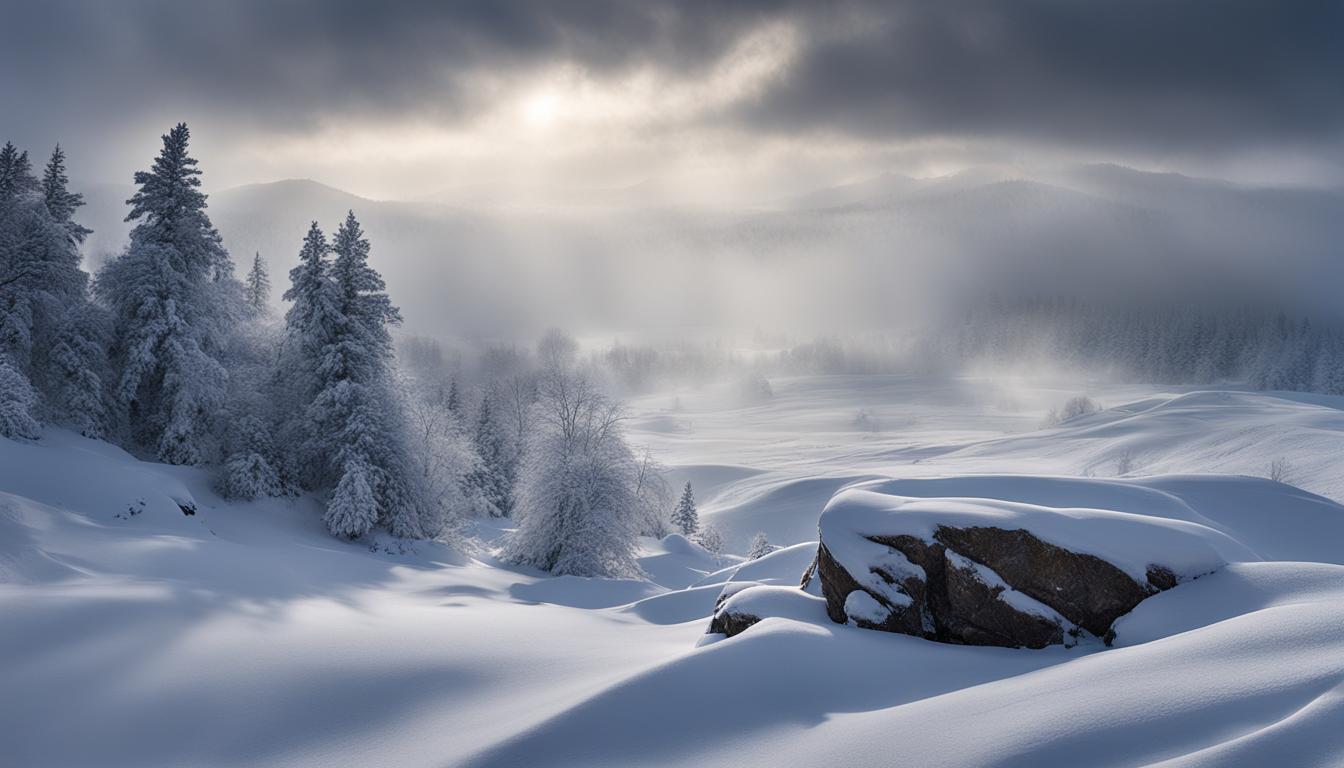Volcanic eruptions and wildfires are natural phenomena that can have significant impacts on the environment and human health. During these events, two substances that may be confused for one another are volcanic ash and smoke. While they may appear similar, there are distinct differences between them in terms of their formation, composition, and effects. Understanding these disparities is crucial for safety and prevention measures. Read on to explore the dissimilarities between volcanic ash and smoke.
Key Takeaways:
- Volcanic ash is formed during explosive volcanic eruptions and consists of pulverized rocks and volcanic glass.
- Smoke is produced during wildfires and is composed of char, soot, and ash from burning organic materials.
- Volcanic ash is dense and can cause respiratory damage, while smoke is rich in carbon and calcium and can also harm the respiratory system.
- Both volcanic ash and smoke can have severe environmental impacts, including poor air quality and contamination of water and food sources.
- Understanding the differences between volcanic ash and smoke is essential for implementing proper safety measures during volcanic eruptions and wildfires.
Formation and Composition of Volcanic Ash
Volcanic ash is a result of explosive volcanic eruptions when rocks and volcanic glass are pulverized or shattered. These tiny fragments, measuring less than 2 millimeters in diameter, are propelled into the air by volcanic gases such as water vapor, carbon dioxide, and sulfur dioxide. The composition of volcanic ash consists of broken rocks and glass, making it dense and capable of causing significant damage to the respiratory system upon inhalation.
Silicosis, a condition caused by the inhalation of silica-rich ash particles, can lead to permanent lung damage.
| Formation of Volcanic Ash | Composition of Volcanic Ash |
|---|---|
| – Explosive volcanic eruptions | – Broken rocks and volcanic glass |
| – Pulverization and shattering of rocks and volcanic glass | – Dense and fine particles, measuring less than 2 millimeters |
| – Propelled into the air by volcanic gases | – Contains silica, leading to silicosis |
Volcanic ash particles can travel long distances, affecting air quality, visibility, and even contaminating water and food sources. Its dense nature allows it to accumulate for many years, posing a long-term hazard to both human health and the environment.
Formation and Composition of Smoke
Smoke is a byproduct of wildfires and is formed when organic materials, such as trees and vegetation, burn. It consists of three main components: char, soot, and ash. Char refers to organic materials that didn’t burn completely, while soot consists of fine carbon particles generated during the burning process. Ash is the light-colored fine powder that remains after the burning is complete. Unlike volcanic ash, smoke is rich in carbon and calcium.
In terms of composition, smoke differs significantly from volcanic ash. While volcanic ash is primarily made up of fragmented rocks and volcanic glass, smoke is predominantly composed of organic matter. The carbon-rich nature of smoke makes it a potential health hazard, especially when inhaled. Individuals with pre-existing respiratory conditions, such as asthma, may experience exacerbated symptoms due to the irritants present in smoke particles.
Furthermore, smoke particles are typically smaller in size compared to volcanic ash particles. This characteristic allows smoke to spread over larger areas and can affect air quality over hundreds of miles from the fire site. The smaller size of smoke particles also means that they can penetrate deeper into the respiratory system, increasing the risk of respiratory problems and long-term health complications.
| Volcanic Ash | Smoke |
|---|---|
| Formed during explosive volcanic eruptions | Produced during wildfires |
| Consists of fragmented rocks and volcanic glass | Composed of char, soot, and ash |
| Dense and capable of causing respiratory damage | Rich in carbon and calcium |
| Presents long-term hazard due to accumulation | Affects air quality over large areas |
Environmental Impact and Hazards
Both volcanic ash and smoke have severe consequences for the environment and human health. The impact of volcanic ash can be extensive, with wide-ranging effects on air quality, water sources, and food contamination. When volcanic ash is released into the atmosphere during an eruption, it can cause breathing difficulties and eye irritation for those exposed. The fine particles of ash can also contaminate water supplies, making them unsafe for consumption. Additionally, volcanic ash can settle on crops and contaminate food sources, leading to potential health risks for individuals.
Smoke from wildfires also poses significant hazards to the environment and human health. The smoke, consisting of char, soot, and ash, can contribute to poor air quality over large areas, affecting not only those near the fire site but also communities hundreds of miles away. Inhalation of smoke particles can cause respiratory problems, particularly for individuals with pre-existing conditions such as asthma. The presence of smoke can also have detrimental effects on wildlife, damaging ecosystems and habitats.
The impact of both volcanic ash and smoke highlights the importance of addressing poor air quality and implementing measures to prevent further contamination of water and food sources.
Proper monitoring and early warning systems are crucial for protecting communities from the harmful effects of volcanic ash and smoke. By staying informed and following safety guidelines during volcanic eruptions and wildfires, individuals can reduce their risk of exposure and minimize the impact on their health and the environment.

Conclusion
In conclusion, the differences between volcanic ash and smoke are significant in terms of formation, composition, and impact on the health and environment.
Volcanic ash, composed of fragmented rocks and glass, poses serious risks such as silicosis and respiratory damage. On the other hand, smoke from wildfires contains char, soot, and ash, which can also have detrimental effects on the respiratory system.
Although both volcanic ash and smoke can cause harm, it is crucial to understand their disparities to implement appropriate safety measures and mitigate the adverse consequences of volcanic eruptions and wildfires. Both volcanic ash and smoke impact air quality, contaminate water and food sources, and pose risks to human health, particularly for vulnerable individuals with respiratory conditions.
By comprehending the similarities and differences between volcanic ash and smoke, we can better equip ourselves with the knowledge needed to protect our health and the environment during volcanic eruptions and wildfires.
FAQ
What is the difference between volcanic ash and smoke?
Volcanic ash is generated during explosive volcanic eruptions when rocks and volcanic glass are pulverized or shattered, while smoke is produced during wildfires when organic materials such as trees burn.
What are the differences in formation and composition between volcanic ash and smoke?
Volcanic ash consists of broken rocks and glass propelled into the air by volcanic gases, while smoke consists of char, soot, and ash generated from burning organic materials.
What are the environmental impacts and hazards associated with volcanic ash and smoke?
Volcanic ash can cause breathing difficulties, eye irritation, contamination of water and food sources, and even roof collapses. Smoke from wildfires can cause poor air quality and spread over vast areas, affecting hundreds of miles from the fire site.
How do volcanic ash and smoke affect human health?
Inhalation of volcanic ash can lead to respiratory problems and silicosis, while smoke can also harm the respiratory system, particularly for individuals with pre-existing conditions like asthma.
Why is it important to understand the differences between volcanic ash and smoke?
Understanding the disparities between volcanic ash and smoke is essential for implementing proper safety measures and mitigating the adverse effects of volcanic eruptions and wildfires.
 Skip to main content
Skip to main content


